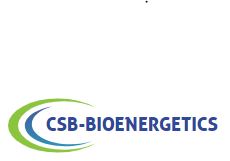Prix Serum Animal
Freezing Medium (Serum-free & animal origin-free) |
|||
| PB180438-100mL | Elabscience Biotech | 100 mL | EUR 118 |
|
Description: Supplements & Reagents |
|||
Animal Serum Laboratories manufactures the prix serum animal reagents distributed by Genprice. The Prix Serum Animal reagent is RUO (Research Use Only) to test human serum or cell culture lab samples. To purchase these products, for the MSDS, Data Sheet, protocol, storage conditions/temperature or for the concentration, please contact Animal Serum. Other Prix products are available in stock. Specificity: Prix Category: Serum Group: Animal
Serum albumin |
||
| SAB | 1mg | EUR 2640 |
Serum albumin |
||
| SAB | 1mg | EUR 2640 |
Serum albumin |
||
| SAB | 1mg | EUR 2640 |
Serum albumin |
||
| SAB | 1mg | EUR 2640 |
Serum albumin |
||
| SAB | 1mg | EUR 2640 |
Serum albumin |
||
| SAB | 1mg | EUR 2640 |
Cow Serum |
||
| Abbexa | 100 ml | EUR 410.4 |
Y-27632, Animal-Free |
|||
| 18188-04 | NACALAI TESQUE | 10MG | EUR 525 |
SOY PEPTONE, ANIMAL FREE |
|||
| S19-140-10kg | Alphabiosciences | 10 kg | Ask for price |
SOY PEPTONE, ANIMAL FREE |
|||
| S19-140-2kg | Alphabiosciences | 2kg | Ask for price |
SOY PEPTONE, ANIMAL FREE |
|||
| S19-140-500g | Alphabiosciences | 500 g | Ask for price |
L(-)-Proline, Animal-Free |
|||
| 13040-22 | NACALAI TESQUE | 25G | EUR 49 |
L-Serine, Animal-Free |
|||
| 13041-12 | NACALAI TESQUE | 25G | EUR 60.2 |
L-Valine, Animal-Free |
|||
| 13046-62 | NACALAI TESQUE | 25G | EUR 50.4 |
D-Biotin, Animal-Free |
|||
| 13049-61 | NACALAI TESQUE | 1G | EUR 147 |
D-(+)-Glucose, Animal-Free |
|||
| 13057-35 | NACALAI TESQUE | 500G | EUR 42 |
A 83-01, Animal-Free |
|||
| 19692-54 | NACALAI TESQUE | 10MG | EUR 343 |
L-Leucine, Animal-Free |
|||
| 13036-92 | NACALAI TESQUE | 25G | EUR 35 |
Vitamin B12, Animal-Free |
|||
| 13054-94 | NACALAI TESQUE | 100MG | EUR 49.7 |
L-Arginine, Animal-Free |
|||
| 11984-32 | NACALAI TESQUE | 25G | EUR 35 |
L-Arginine, Animal-Free |
|||
| 11984-45 | NACALAI TESQUE | 500G | EUR 308 |
L-Glutamine, Animal-Free |
|||
| 13004-02 | NACALAI TESQUE | 25G | EUR 34.3 |
L-Glutamine, Animal-Free |
|||
| 13004-15 | NACALAI TESQUE | 500G | EUR 262.5 |
L-(+)-Isoleucine, Animal-Free |
|||
| 13035-02 | NACALAI TESQUE | 25G | EUR 77 |
